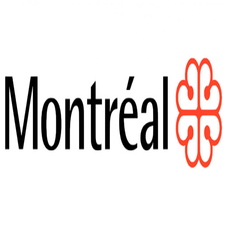Beach
Type of resources
Topics
Keywords
Contact for the resource
Provided by
Formats
Representation types
Update frequencies
status
-

This theme presents the index of water health along the banks of the St. Lawrence River. It makes it possible to determine if the sites present risks to human health and if they are suitable for swimming. These data are the result of an exploratory monitoring program that aims to raise awareness among the population and local actors about the possible reopening of bathing sites that have good potential. This program also makes it possible to highlight any improvement in bacteriological quality resulting from the reduction of wastewater overflows during rainy weather or resulting from the installation of disinfection equipment.**This third party metadata element was translated using an automated translation tool (Amazon Translate).**
-

IS: Kortið sýnir staðsetngar þar sem strendur hafa verið hreinsaðar í tengslum við átaksverkefni á vegum Umhverfisstofnunnar. Um verkefnið: Strandhreinsun Íslands er 5 ára átak í hreinsun strandlengju Íslands af plasti og öðrum úrgangi. Framgang átaksins má sjá á kortinu. Áhugasamir aðilar, s.s. almenningur, fyrirtæki, félagasamtök o.fl geta tekið þátt í verkefninu með því að taka frá strandbúta á kortinu og hreinsa. Niðurstöður hreinsana verða sýnilegar á kortinu. Átakið byggir á aðgerð 17 í aðgerðaáætlun stjórnvalda í plastmálefnum, Úr viðjum plastsins. Hreinleiki sjávar er Íslandi afar mikilvægur og strandhreinsanir eiga þátt í að halda hafinu hreinu. Strandlengjan er um 5000 km að lengd og er nauðsynlegt að framkvæma hreinsun hennar með kerfisbundnum hætti. Umhverfisstofnun úthlutar styrkjum til verkefna sem felast í hreinsun strandlengju Íslands árlega næstu 3 ár til lögaðila, s.s. félagasamtök eða áhugamannafélag. EN: The Beach Cleaning Map in Iceland allows users to register for beach cleaning activities. Data is compiled on a map, providing real-time updates on cleaning status and collected debris. Managed by The Environment Agency of Iceland, it facilitates community engagement and environmental stewardship for coastal conservation efforts.
-

__collective equipment__ brings together buildings housing activities that meet the various needs of the population in terms of health, education, culture, sport and tourism. The classification of public facilities according to their metropolitan or agglomeration interests is carried out solely for the purposes of land use planning and does not in any way affect the division of powers established in accordance with applicable laws. The data available in this set come from section 2.1 of the Land Use and Development Plan of the Agglomération de Montréal. They are represented on __maps 34 to 38__, located in Appendix I. Presented in section 2.3 and illustrated on __map 44__, __equipment and infrastructures related to water__ allow the practice of various nautical activities on the large bodies of water surrounding the agglomeration of Montreal. This urban planning and development plan for the agglomeration of Montreal outlines the main parameters that will guide the Montreal agglomeration council in decisions relating to land use planning in the coming years. From a perspective of sustainable development, this document guides decisions that shape the territory in order to promote compact and greener neighborhoods, increase public and active transportation, support the economic dynamism of the agglomeration and highlight areas of interest. NOTE THAT THESE DATA FROM THE LAND USE AND DEVELOPMENT PLAN WERE UP TO DATE AT THE TIME OF ITS ADOPTION ON JANUARY 21, 2015. THE DATA COULD BE CHANGED LATER.**This third party metadata element was translated using an automated translation tool (Amazon Translate).**
 Arctic SDI catalogue
Arctic SDI catalogue